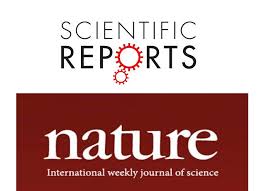Study reveals how OR ventilation, patient positioning impact surgical site infection risk

Editor's Note Optimizing patient positioning can help reduce the risk of surgical site infections due to airborne contaminants in positive-pressure ORs, according to a study published August 12 in Nature: Scientific Reports. Maintaining higher pressure than adjacent spaces prevents entry of contaminants from environments external to the OR. For this…
Surgical site infections often caused by preexisting bacteria

Editor's Note Most healthcare-associated surgical site infections are not caused by pathogens acquired in the hospital, but by previously harmless bacteria already present on patients’ skin prior to being admitted, according to a study published April 10 in Science Translational Medicine. Surgical site infections account for the highest annual costs…
SHEA: Strategies to prevent SSIs updated
Editor's Note The Society for Healthcare Epidemiology of America (SHEA) has updated the Strategies to Prevent Surgical Site Infection in Acute Care Hospitals, which was published in 2014. The update highlights practical recommendations designed to assist acute-care hospitals in implementing and prioritizing their surgical site infection (SSI) prevention efforts. Among…
Effect of COVID-19 precautions on postop SSIs
Editor's Note This study from the Mayo Clinic finds that perioperative COVID-19 precautions did not significantly reduce the risk of surgical site infections (SSIs). The analysis included 29,904 patients who had colorectal, hysterectomy, hip, and knee prosthesis procedures at the Mayo Clinic’s multicenter institution between January 1, 2018 and December…
Mid-term postop outcomes in patients with, without COVID-19
Editor's Note This study from the University of Maryland School of Medicine and Veterans Affairs Medical Center, Baltimore, finds that COVID-19 is associated with decreased overall and complication-free survival, primarily in the early postoperative period. Of 153,741 surgical patients analyzed between March 2020 and 2021, 4,778 COVID-19-positive patients were matched…
SHEA: New SSI guidance recommends antibiotics be discontinued after incision is closed
Editor's Note This update to the 2014 "Strategies to Prevent Surgical Site Infections in Acute Care Hospitals" recommends that antibiotics be discontinued after a patient’s incision has been closed in the OR, even if drains are present. The expert panel members writing the update add that continuing antibiotics after closure…
SSI trends in community hospitals
Editor's Note In this study, researchers from the Duke Infection Control Outreach Network Surveillance Team, Duke University School of Medicine, Durham, North Carolina, find that surgical site infection (SSI) rates did not decrease in community hospitals from 2013 to 2018. SSI data was collected from patients having 26 common surgical…
Pediatric SSIs after ambulatory surgery
Editor's Note This study led by researchers at Children’s Hospital at Montefiore, Bronx, New York, finds that morbidity is also associated with surgical site infections (SSIs) after ambulatory surgery in children. Of 65,056 patients analyzed and 13, 795 chart reviews, 45 SSIs were identified after pediatric ambulatory surgery. The weighted…
New machine learning models predict adverse postop abdominal hernia surgery outcomes
Editor's Note Machine learning (ML) models designed by surgeons at the University of Texas MD Anderson Cancer Center in Houston show a high level of accuracy in predicting which types of patients are most likely to have a hernia recurrence or other complications after surgery in this study. Of 725…
Johns Hopkins robot performs first laparoscopic intestinal anastomosis without human help
Editor's Note The Smart Tissue Autonomous Robot (STAR), designed by a team of researchers at Johns Hopkins University, has performed laparoscopic intestinal anastomoses in four experiments on pig tissue without human help. The robot outperformed surgeons using manual-laparoscopic and robot-assisted surgical techniques in the consistency of suture spacing and bite…

 Free Daily News
Free Daily News